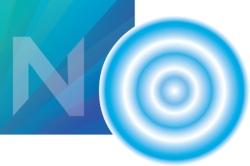 The latest guest presenter for UMaine’s Digital Curation program uses digital tools to scour sites of trauma to recover stories of the traumatized.
The latest guest presenter for UMaine’s Digital Curation program uses digital tools to scour sites of trauma to recover stories of the traumatized.
The author of numerous books on spatial history, Anne Knowles is best known for her research using sophisticated mapping technologies to illuminate sites such as the Battle of Gettysburg and the Auschwitz concentration camp. She is the recipient of fellowships from the Guggenheim Foundation, the Association of American Geographers, the National Endowment for the Humanities, and the American Council of Learned Societies. On 18 November 2016, her conversation with Digital Curation students ranged from what General Robert E. Lee could see at the Battle of Gettysburg to finding humanity in Auschwitz.
Knowles used a viewshed analysis to infer what geographic obstructions would have occluded Lee’s vision of the battlefield of Gettysburg on the morning of Pickett’s fateful charge. Her analysis of the changing architecture of Auschwitz, meanwhile, demonstrates how lofty Nazi ideals often gave way to the pragmatic needs of genocide, embodying the “banality of evil” author Hannah Arendt ascribed to Holocaust organizer Adolf Eichmann.
 Joining Knowles for this live video conference were graduate students from the University of Maine’s all-online Digital Curation program, which walks students through the phases of collecting, representing, accessing, and preserving digital material. Students and alumni beamed in from as far as Mexico and Tanzania for this teleconference, lending an appropriately international perspective to issues of global geopolitics. Their contributions touched on current and potential uses of geographic data in tracking health care in rural Maine, evidence for the International Criminal Tribunal, and an international missing persons database.
Joining Knowles for this live video conference were graduate students from the University of Maine’s all-online Digital Curation program, which walks students through the phases of collecting, representing, accessing, and preserving digital material. Students and alumni beamed in from as far as Mexico and Tanzania for this teleconference, lending an appropriately international perspective to issues of global geopolitics. Their contributions touched on current and potential uses of geographic data in tracking health care in rural Maine, evidence for the International Criminal Tribunal, and an international missing persons database.
Knowles’ presentation touched on other techniques taught in the digital curation program, including the crowdsourcing of metadata keywords to describe recorded testimonies of Holocaust survivors in the Shoah archive. Knowles showed how to map these recordings in a semantic rather than spatial way, correlating references to the various concentration camps with other keywords denoting transport, hunger, and companionship.
This spring the Digital Curation program offers online classes in metadata (DIG 510) and digital preservation (DIG 550) starting January 18th. For more information, visit DigitalCuration.UMaine.edu.
